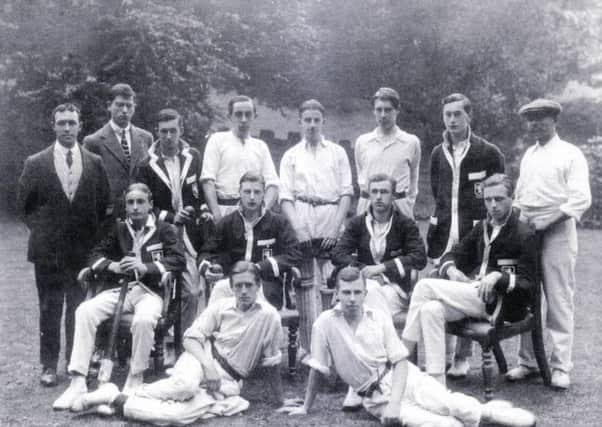Yorkshire stories from the Great War


IN February last year The Yorkshire Post, in association with the University of Leeds, began telling the story of the Great War through those who lived through it.
Each week in our Legacies of War series we focused on a different element of the conflict, everything from life in the trenches to the women working in the hospitals and munitions factories.
Advertisement
Hide AdAdvertisement
Hide AdWith the help of readers, local historians and curators we have been able to unearth stories that had either been forgotten about, or remained tucked away in a box somewhere.
There’s the tale of Ernest Taylor from Leeds who, like so many of his friends, signed up after war broke out. He was killed in 1916 and 98 years later eight of his relatives, including three of his granddaughters, made an emotional journey to visit his grave in Northern France.
There are countless other moving stories like that of Walter Ogden, a tank commander from Harrogate who was killed at the Battle of Cambrai. For almost a century his letters home and those sent to him by family and friends lay in an attic before being discovered by relatives while refurbishing the family business.
In some instances it’s the fading photographs that get you – like the picture of the King Edward VII School cricket team taken in 1913. Most of them don’t look old enough to shave yet within five years over half were dead.
Advertisement
Hide AdAdvertisement
Hide AdSome stories, like that of Leeds lad Tom Taylor, almost defy belief. A member of the British Expeditionary Force, he won citations for his bravery before being wounded in the First Battle of Ypres and in 1916 he was invalided out of the British Army. Undeterred, he travelled to the United States where he was eventually accepted by the 110th Engineers as a bayonet and bomb throwing instructor.
He ended up in a unit commanded by one Harry S Truman – who would go on to become US President. Taylor returned to France with his new comrades, saw action and survived the war and 30 years later was part of President Truman’s guard of honour at his inauguration.
There have been other uplifting stories, too, like that of George Francis Robinson. He was among the brave east coast fishermen from places like Hull, Scarborough and Grimsby who risked their lives clearing mines in the North Sea where they played a deadly game of cat and mouse with the German U-boats. He was among the lucky ones who lived to tell to the tale.
Women, too, played a crucial role. People like Dorothy Wilkinson, a nurse who helped care for badly injured soldiers at Beckett Park Hospital in Headingley, and Edith Sykes, one of the “Barnbow lasses” who lost their lives in the munitions factories. Then there was the tireless campaigning of prominent figures like Leonora Cohen.
Advertisement
Hide AdAdvertisement
Hide AdWe have benefitted greatly from the archive of Letters From The Front, based around original letters sent back to Yorkshire from men and women serving at various fronts around the world.
These letters, first published a century ago in the Leeds Mercury, are genuine accounts that have helped bring this tumultuous period back to life.
The war, of course, was to last far longer than most people had expected and as a nation we paid a high price for victory.
There is much more still to come and 2015 will bring with it further stories. This year will see more landmark anniversaries – the first Zeppelin attacks on England, the ill-fated Gallipoli campaign, the first use of poison gas and the sinking of the Lusitania, to name just a few.
Each month we plan to put the spotlight on all these different aspects, and others, of a war that not only shaped a century, but which continues to touch our lives today.